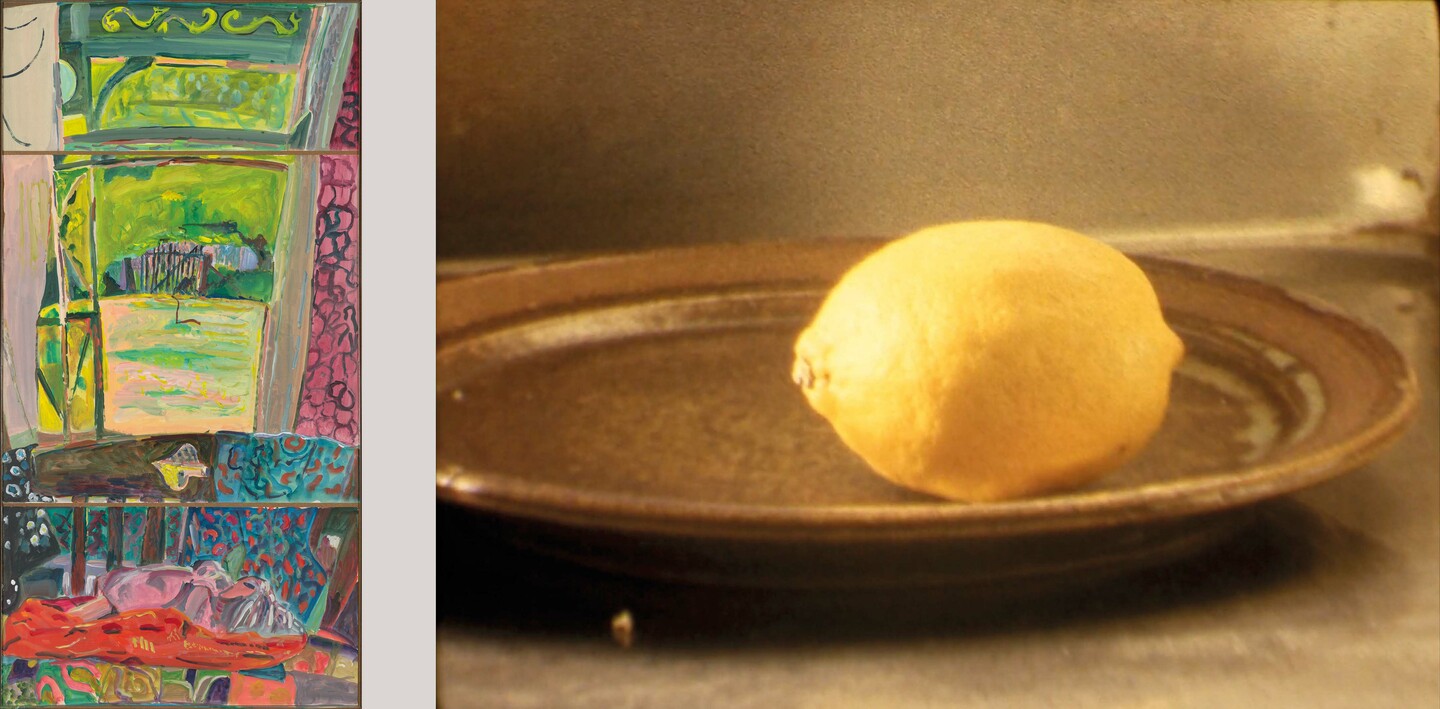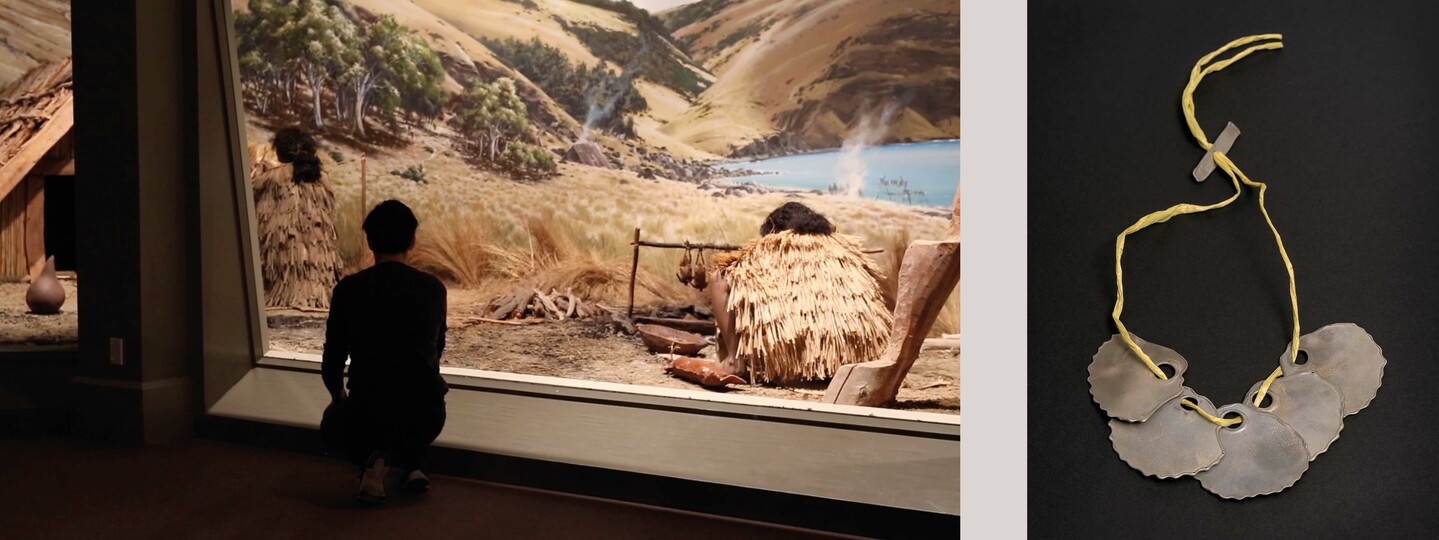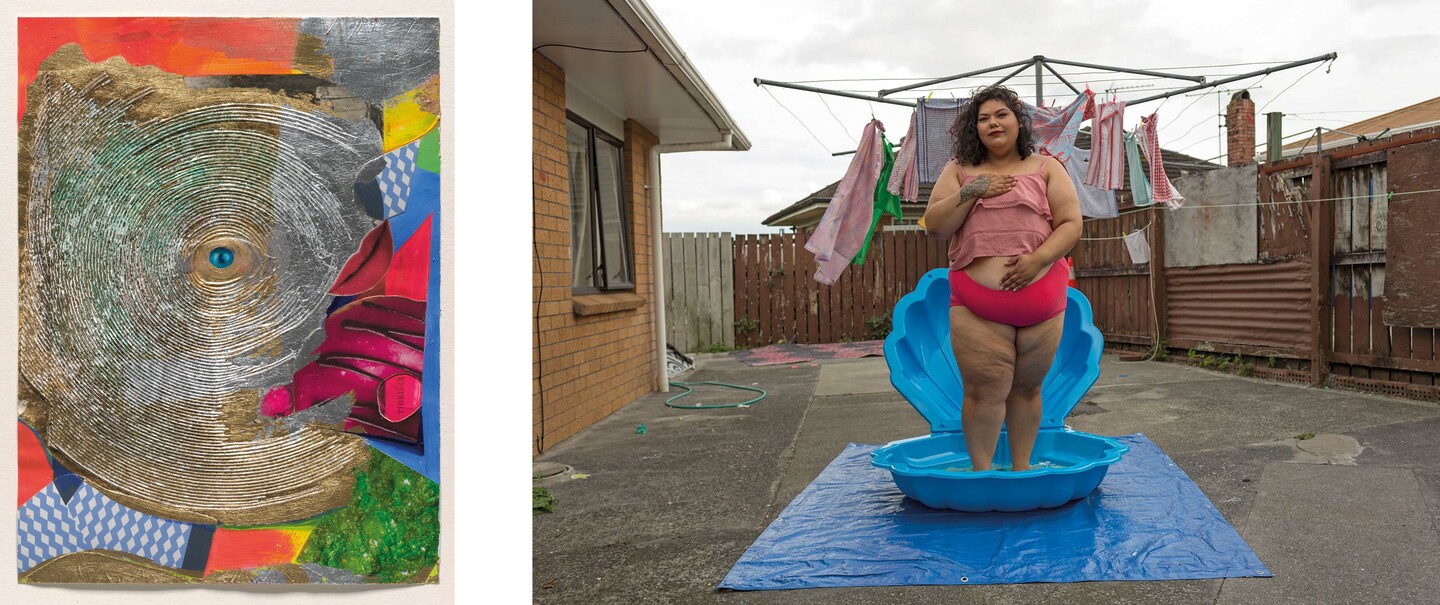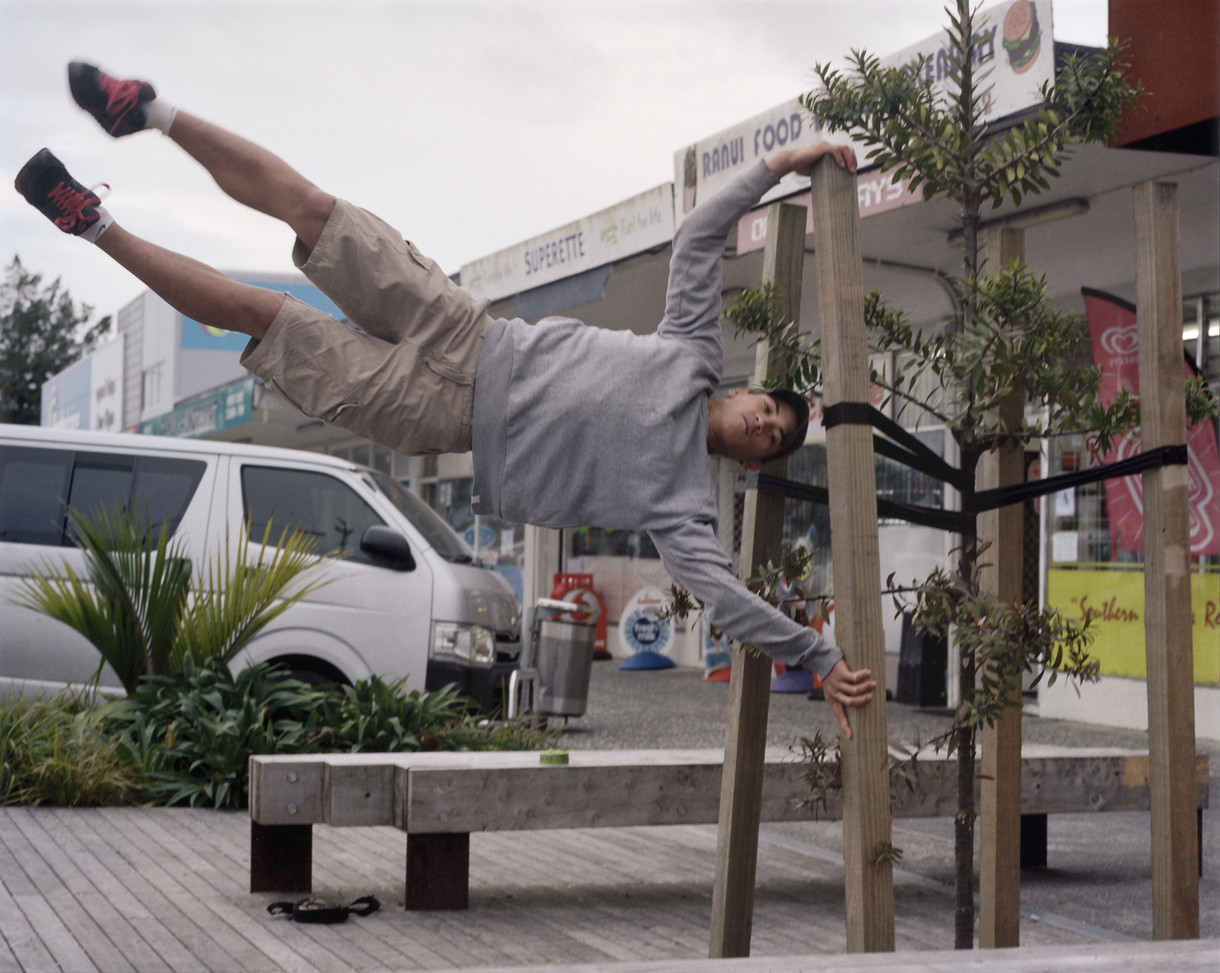What Can Exhibitions Tell Us?
Listening to Perilous: Unheard Stories from the Collection

Allie Eagle Self Portrait 1974. Graphite on paper. Collection of Christchurch Art Gallery Te Puna o Waiwhetū, purchased 2012
Olivia Spencer Bower Self Portrait 1950. Oil on board. Collection of Christchurch Art Gallery Te Puna o Waiwhetū, purchased 1954
In a corner of Perilous: Unheard Stories from the Collection, two self portraits are placed as if in conversation with one another. Made by Allie Eagle and Olivia Spencer Bower in 1974 and 1950 respectively, the pairing creates a striking vignette, and hints at some of the important themes that drive this exhibition.
In her expressive graphite on paper drawing, Eagle presents herself with a steely-eyed focus that perfectly captures the clarity of vision and determination of an artist committed to advocating for the rights of women in Aotearoa. Eagle was a pivotal figure in the feminist movement of the 1970s, and did much to amplify the voices and experiences of women through her own art practice and curatorial projects. Spencer-Bower, whose retrospective exhibition Eagle curated in 1977, was a similarly progressive artist. Beginning her career as a young student of the Slade School of Art in 1929 before returning to Aotearoa in 1931, she pursued her practice during a period when it was certainly a challenging prospect for a woman to set herself up as a professional artist. Like Eagle, she pictures herself with a committed and steadfast gaze that embodies her spirit of radical defiance. Although produced twenty-four years apart and by artists at different stages in their careers, these two works represent a compelling intergenerational dialogue, their placement deftly illustrating that struggles for recognition and empowerment remain ongoing pursuits, and indeed, that art continues to play a key role in pressing for change. Throughout Perilous there are numerous examples of these kinds of transgenerational relationships. Take, for example, Nova Paul’s beautiful and intimate moving-image work Still Light (2015), which responds to a poem by Joanna Margaret Paul and is positioned alongside one of Paul’s own paintings, Barrys Bay: Interior with Bed and Doll (1974). In both, the domestic contexts of home – its spaces, objects and activities – are rendered through poetic reflection on the everyday. Still Light calls back to Paul’s interior, celebrating the textures of the domestic environ (one which is still tied in many ways to the lives of women, and mothers) with a cinematic touch that is both gentle and intense, and finds meaningful connection through a shared understanding of the difficulties and joys of whānau and family life.

Joanna Margaret Paul Barrys Bay: Interior with Bed and Doll 1974. Oil and watercolour on paper and hardboard. Collection of Christchurch Art Gallery Te Puna o Waiwhetū, purchased 1974
Nova Paul Still Light 2015. 16mm film transferred to digital video, colour, sound, duration 6 mins 35 secs. Collection of Christchurch Art Gallery Te Puna o Waiwhetū, purchased 2020
The importance of whakapapa also underpins the work of artists such as Areta Wilkinson and Ana Iti whose respective works Hei Tupa (2013) and Treasures Left by Our Ancestors (2016) are brought together in another persuasive curatorial pairing. For both Wilkinson and Iti, their art making is rooted in the connectivities of whakapapa, whenua, and mātauranga Māori. Hei Tupa, a contemporary reinterpretation of a tupa shell necklace, is a piece that connects to a rich Māori history of adornment and, as Wilkinson writes, “a generational art making process.”1 Often working within the spaces of museum collections, she reconnects with taoka that now live in heritage archives. To these taoka tuku iho, she notes, “I have added my ‘words and stories’ that anchor the concepts in my time, and if these new works pass into the hands of others, they too may attract further kōrero”.2 Iti’s video work Treasures Left by Our Ancestors, is an attempt to connect with tūpuna through a sharp critical reflection on museological displays and the narratives they construct. Crouched in front of an old diorama at Canterbury Museum – now removed as part of the museum’s current ren- ovation project – Iti looks back at the display, mimicking the poses of the figures in what she describes as an “act of empathy and endurance”.3 Although supposedly representing the lives of early Māori in Waitaha Canterbury, these dioramas presented an extremely misleading and harmful depiction of mana whenua. Iti’s performance of looking is a powerful intervention that sheds light on the colonial legacies embedded within these kinds of curated spaces, and as an artist seeking to connect with her own histories and cultural narratives she poignantly asks “What responsibility does the Museum have to me?”4

Ana Iti Treasures Left by Our Ancestors 2016. Single-channel digital video, colour, sound, duration 4 mins 40 secs. Collection of Christchurch Art Gallery Te Puna o Waiwhetū, purchased 2019
Areta Wilkinson Hei Tupa 2013. Oxidised sterling silver, polyester. Collection of Christchurch Art Gallery Te Puna o Waiwhetū, purchased 2016
These kinds of transgenerational exchanges add richness to the curatorial agenda of Perilous, and signal the salience of relationships and communities of practice as driving forces that shape art making and art histories. However, it would be wrong to think that this exhibition relies on emphasising a straightforward sense of continuity or in- fluence. A relational way of thinking about the histories of art will necessarily be messier and more difficult to choreograph. Indeed, continuity and linear narratives represent an approach to art historical enquiry and curatorial practice that contemporary scholars have sought to problematise since at least the 1970s. Instead of setting out to construct neatly packaged stories that hide their own omissions and decision-making processes, contemporary exhibitions, at their best, let us see behind the curtain – allowing loose ends, diverse perspectives and sometimes unwieldy transgenerational connection to propose new ways of thinking or to ask provocative questions.
Shows like Perilous do important work in highlighting the ways in which galleries and exhibitions tell stories, and the power they can have in doing so. Far from being objective, they are ideological spaces within which certain themes and points of view are dramatised. Historically this has been from a patriarchal, heteronormative and Western perspective. In Perilous we see a curatorial paradigm that leans into its own institutional critique in a way that is generative, and foregrounds the importance of embracing new frameworks. The subtitle of this exhibition, Unheard Stories from the Collection, speaks to the kind of erasures and silencing that galleries and museums have been (and in some cases continue to be) responsible for. In doing so, we see the Gallery and its curators reflect on their own roles and their accountability as storytellers.

Miranda Parkes The Third-class Compartment (exploded book: French Painting) 2020. Gold and silver foil, collage elements, acrylic, varnish on photogravure book plate. Collection of Christchurch Art Gallery Te Puna o Waiwhetū, purchased 2021
Louisa Afoa Blue Clam 2018. Digital photograph. Collection of Christchurch Art Gallery Te Puna o Waiwhetū, purchased 2021
Certainly this is something that many of the artists in Perilous call for. Let us add to the works I have already cited Louisa Afoa’s Blue Clam (2018), a digital photograph that transforms an ‘icon’ of Western art history – Botticelli’s Birth of Venus (1485–6) – into a representation that more meaningfully reflects her own experiences of the world. It is a convincing rebuke of the universalising assumptions that have supported art history’s Western canon, delivered through an irreverent lens. Picturing herself in her own backyard as Venus, Afoa incisively identifies, as the exhibition text notes, the systemic absence of “brown bodies in white spaces”.5 And in works from her exploded book series (2020), Miranda Parkes exuberantly defaces the pages of a volume on French painting with a mixture of collage and colourful, painterly gestures, challenging viewers to think deeply about the way that art histories are produced and circulated. Her effacing of the text makes it unreadable as art historical scholarship, while the prioritising of her own marks demonstrates that meaning itself is changeable.
By acknowledging the inherent subjectivity of art history and of exhibition making, Perilous invites viewers to critically engage with the stories being presented, encouraging them to question dominant narratives and to consider alternate perspectives. In doing so, exhibitions like this underscore the role of galleries and museums as agents of social and political discourse that can be significant forces in shaping public consciousness and contributing to ongoing dialogues about representation, power and inclusion. In this sense, collection exhibitions like Perilous are not merely displays of art but, done well, can be dynamic platforms that encourage visibility and foster debate.
Kōrero – speech, discourse
Mātauranga Māori – the body of knowledge originating from Māori ancestors
Taoka – treasures, things of cultural value
Taoka tuku iho – heirloom Tūpuna – ancestors Whakapapa – genealogy
Whānau – extended family Whenua – land








